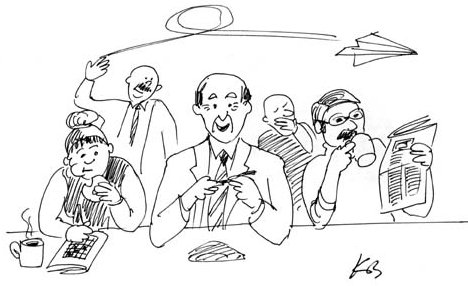| Clinical Consultation | ||
| Inservice |
Getting Started
| Equipment and Preparation |
||
| Set Up Procedures | ||
| Example Forms |
After individual consultations for children with low-incidence disorders, conscientious school districts often request inservice training for teachers and staff about the disorders. Video Inservices usually consist of interactions between 3-4 people or more on one end of the conference with less than 3-4 people on the other.

Video inservice provides a lecture environment in which questions may be readily addressed to the lecturer(s) and video or computer-based supplementary materials may be shown and discussed. These situations put far greater demands on the facilities and equipment insofar as they require better (bigger, more) video, audio and microphone arrangements but usually do not require patient confidentiality.
An important advantage of video inservice is the ability to include all teachers involved with a particular child in one meeting, thus increasing the opportunity for interaction between consultants and teachers.
| Example of video inservice during an IEP meeting with teachers and consultants. |
Videoconference-based inservices also allow consultants to demonstrate concepts and materials that are not readily accessible at remote sites.
| Example of video inservice with supplemental media demonstration. |
Additionally, video inservice provides an opportunity for follow-up presentations where education on a particular disorder may prove beneficial to a school's entire staff.
| Video inservice follow-up session about a child with a low incidence disorder. |
Telephone conferencing vs. Videoconferencing:
One advantage of video inservice is that body language provides important
information on whether the audience is intent and taking notes or eating,
reading or otherwise distracted.
You might hear: "The staff here is eager to implement the changes you suggested for Winona's IEP…"
What you might see:
Introduction | Types of Videoconferencing | Technical Issues | Getting Started | Examples | Resources | Home